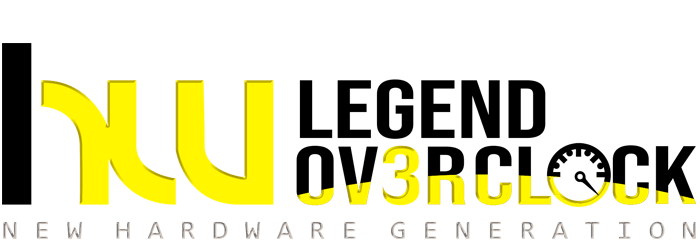
THREAD UFFICIALE AMD RADEON HD5750 - HD5770
Codename : JUNIPER RV840
La GPU Juniper a 40 nm, invece, integra 1,04 miliardi di transistor. Conta sempre su 800 processori shader, 40 unità texture e tratta 64 pixel per clock. La sua interfaccia di memoria, però, è di solo 128 bit. La memoria GDDR5 di cui è dotata muove fino a 76,8 GB/sec di dati.
La Radeon HD 5770 è anch'essa dotata di 1 GB di memoria GDDR5 a 1200 MHz, che genera un traffico di 76,8 GB/sec. Ottocento "processori shader" moltiplicati per 850 MHz, per due, danno come risultato 1,36 TFlop di potenza pura, contro i 2,72 TFlop della 5870.
La Radeon HD 5750 è basata sulla stessa GPU Juniper della sorella maggiore. ATI, in questo modello, ha disabilitato 10 core SIMD, ha spento 80 ALU e quattro unità texture. Il clock del core è stato decelerato a 700 MHz, abbassando a circa 1 TFlop la potenza grezza della scheda. ATI non ha però toccato il back end, quindi ci sono sempre 16 ROP e un bus a 128 bit, collegato a 1 GB di memoria GDDR5. Tuttavia, i clock leggermente inferiori, portano il bandwidth della memoria a 73,6 GB/sec, a causa della velocità di 1150 MHz.
Il piccolo die Juniper è ancora più efficiente. In idle, la Radeon HD 5770 consuma solo 18 Watt (la 5850 ne consuma 27 e la 4870 consuma ben 90 watt). Sotto carico, la Radeon HD 5770 segna un consumo di 108 watt (contro i 151 Watt della 5850).
La Radeon HD5750 invece vanta specifiche inferiori, con consumi che diventano di 16 watt in idle e di 86 watt sotto carico.
Specifiche Tecniche:
ATI Radeon™ HD 5770 & HD5750
1.04 billion 40nm transistors
TeraScale 2 Unified Processing Architecture
800 (720) Stream Processing Units
40 (36) Texture Units
64 Z/Stencil ROP Units
16 Color ROP Units
GDDR5 memory interface
PCI Express 2.1 x16 bus interface
DirectX® 11 support
Shader Model 5.0
DirectCompute 11
Programmable hardware tessellation unit
Accelerated multi-threading
HDR texture compression
Order-independent transparency
OpenGL 3.2 support1
Image quality enhancement technology
Up to 24x multi-sample and super-sample anti-aliasing modes
Adaptive anti-aliasing
16x angle independent anisotropic texture filtering
128-bit floating point HDR rendering
ATI Eyefinity multi-display technology2,3
Three independent display controllers
Drive three displays simultaneously with independent resolutions, refresh rates, color controls, and video overlays
Display grouping
Combine multiple displays to behave like a single large display
ATI Stream acceleration technology
OpenCL 1.0 compliant
DirectCompute 11
Accelerated video encoding, transcoding, and upscaling4,5
Native support for common video encoding instructions
ATI CrossFireX™ multi-GPU technology6
Dual GPU scaling
ATI Avivo HD Video & Display technology7
UVD 2 dedicated video playback accelerator
Advanced post-processing and scaling8
Dynamic contrast enhancement and color correction
Brighter whites processing (blue stretch)
Independent video gamma control
Dynamic video range control
Support for H.264, VC-1, and MPEG-2
Dual-stream 1080p playback support9,10
DXVA 1.0 & 2.0 support
Integrated dual-link DVI output with HDCP11
Max resolution: 2560x160012
Integrated DisplayPort output
Max resolution: 2560x160012
Integrated HDMI 1.3 output with Deep Color, xvYCC wide gamut support, and high bit-rate audio
Max resolution: 1920x120012
Integrated VGA output
Max resolution: 2048x153612
3D stereoscopic display/glasses support13
Integrated HD audio controller
Output protected high bit rate 7.1 channel surround sound over HDMI with no additional cables required
Supports AC-3, AAC, Dolby TrueHD and DTS Master Audio formats
ATI PowerPlay™ power management technology7
Dynamic power management with low power idle state
Ultra-low power state support for multi-GPU configurations
Certified drivers for Windows 7, Windows Vista, and Windows XP
Differenze nel dettaglio tra HD5770 e Hd5750:
Engine clock speed: 850 MHz (700MHz)
Processing power (single precision): 1.36 (1.008) TeraFLOPS
Polygon throughput: 850M (700M) polygons/sec
Data fetch rate (32-bit): 136 (100.8) billion fetches/sec
Texel fill rate (bilinear filtered): 34 (25.2) Gigatexels/sec
Pixel fill rate: 13.6 (11.2) Gigapixels/sec
Anti-aliased pixel fill rate: 54.4 (44.8) Gigasamples/sec
Memory clock speed: 1.2 (1.15) GHz
Memory data rate: 4.8 (4.6) Gbps
Memory bandwidth: 76.8 (73.6) GB/sec
Maximum board power: 108 (86) Watts
Idle board power: 18 (16) Watts
Driver e Utility:
Driver AMD Catalyst: QUI
MSI Afterbuner (programma per overlclock): QUI
ATI Tray Tools: QUI
AMD GPU Clock Tool v0.9.26:QUI
RBE - TechPowerUp Radeon Bios Editor: QUI
ATIFlash 3.79: QUI
Roadmap AMD:

Specifiche tecniche:

Radeon HD5770 Reference:

L'architettura del core Juniper:


Radeon HD5750 - Specifiche:

Radeon HD5770 - Specifiche:

Differenze Juniper - Barts - Cypress:

Prestazioni a confronto:



Consumi:

Rumorosità:












